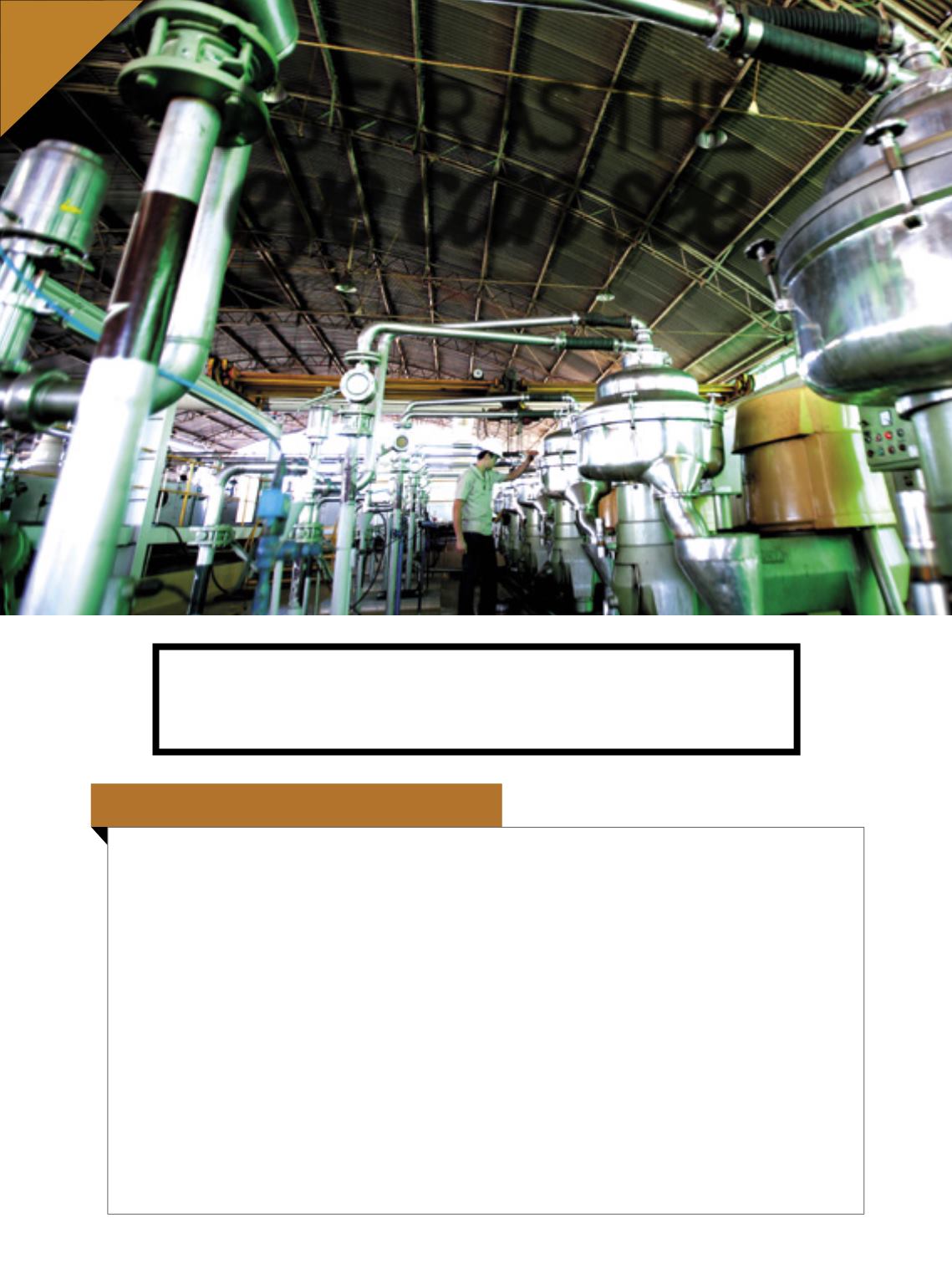
n
n
n
Towards the center-south
When it comes tosugarcaneproducing regions in theCoun-
try, the Center-South prevails, with the biggest area located in
the Southeast. This region devoted more land to the crop in
the 2016/17 season, representing 63 percent of the total, and
the State of São Paulo is the real leader, with 52.7%of the total
areaplanted to sugarcane inBrazil, while the neighboring State
of Minas Gerais occupies the third position, with a share of 9.4
percent.Productivity,comparedtothepreviouscrop,waslower,
buttherewashardlyanychangetothetotalproductionvolume.
The Center-West, with the inclusion of the second and
fourthbiggest producers (GoiásandMatoGrossodoSul, in the
sequence), is gaining momentum in the sector, with an area
that has progressed from19.8 percent to 20 percent of the to-
tal Brazilian area devoted to sugarcane in the past growing
season. The two states expanded their crops, with the state of
Goiásclimbingtothetopwithanareaof10.6percentoftheto-
tal and10.3percent of thevolumeproduced. Nonetheless, the
cropintheregionwasjeopardizedbythelackofrain,causinga
reductionof 3.4percent.
The Northeast, where Alagoas and Pernambuco prevail,
and with a bigger production of sugar, still ranks as third big-
gest area planted to sugarcane in the Country. However, its
sharehas already fallen from10.6percent to9.6percent of the
total crop in question, representing the smallest area in the
past 12 seasons, according to Conab sources, which ascertain
a bigger concentration of production units in the region’s own
farms, to thedetriment of the farmsof the suppliers.
In the thirdposition inproductive terms, due towater de-
ficiency, the Northeast has already been surpassed by the
South, where the crop is concentrated in the State of Paraná.
The State was responsible for the biggest area increase in
the cycle, with 19.7 percent, and, despite the smaller than
expected productivity levels, it registered a 2.2-percent in-
crease in volume. The Brazilian sugarcanemap also includes
theNorth, with less than one percent of the total production,
although the crop has soared in Tocantins.
The 2016/17 crop registered the biggest
areadevotedtosugarcaneintheCountry,butproductivitywas
affectedbybadweatherconditionsandkeptthefinalresultsteady
Asfarasthe
eye can see
Sílvio Ávila
14


